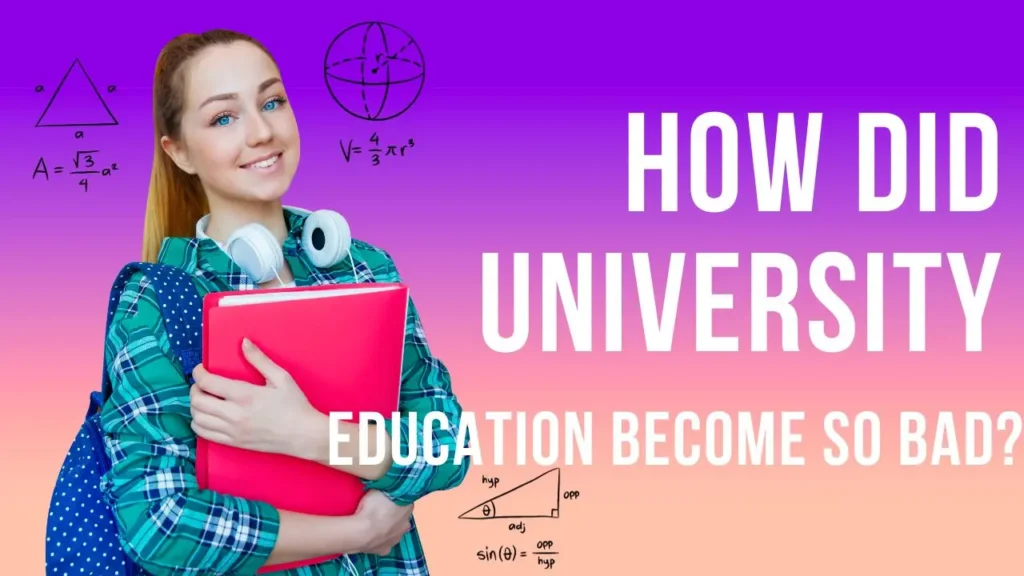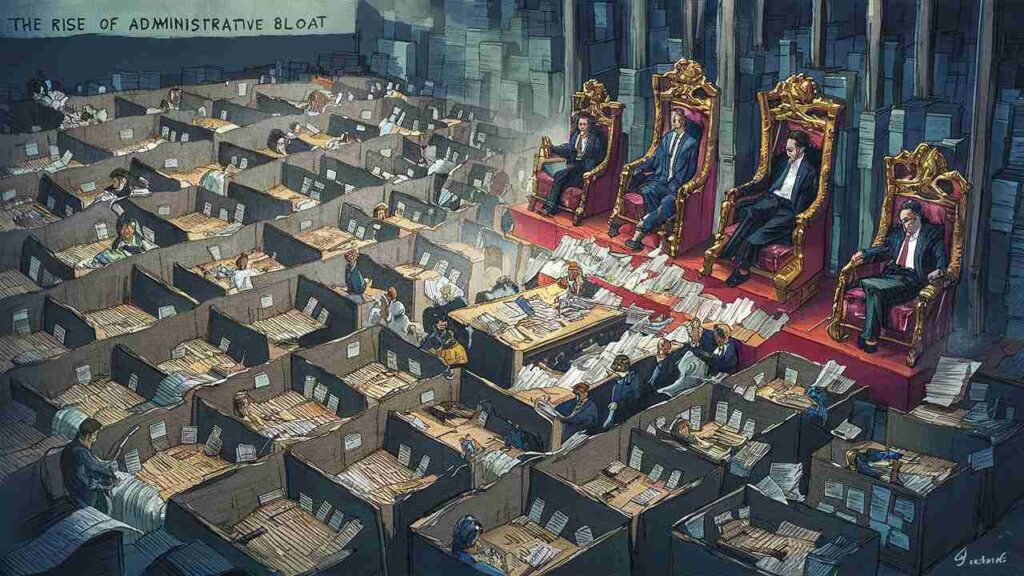The Deterioration of University Education: A Multifaceted Analysis
Higher education has traditionally been viewed as a gateway to personal and professional advancement, a means of acquiring the knowledge and skills necessary to thrive in an increasingly complex and demanding world.
However, in recent years, there has been growing concern about the quality and value of university education. Critics argue that universities have become increasingly focused on generating revenue and meeting bureaucratic requirements, at the expense of providing students with a meaningful and transformative learning experience.

The Rise of Administrative Bloat
One of the most significant factors contributing to the decline of university education is the proliferation of administrative staff. Universities have become increasingly bureaucratic, with layers of administrators overseeing every aspect of academic life.
This has led to a diversion of resources away from teaching and research, and has created a culture of compliance and paperwork that stifles innovation and creativity.

The Focus on Quantity over Quality
In an effort to maximize revenue, universities have also placed a greater emphasis on enrollment numbers, often at the expense of quality. This has led to larger class sizes, fewer faculty, and a decline in the level of personal attention that students receive. As a result, many graduates emerge from university with a degree but without the critical thinking skills and problem-solving abilities necessary to succeed in the workplace.
The Commodification of Education
The rising cost of university tuition has also had a detrimental impact on the quality of education. Students are increasingly burdened with debt, which can lead to financial hardship and anxiety. This, in turn, can distract them from their studies and make it difficult for them to focus on their academic goals.
The Disconnect between Academia and the Workplace
There is also a growing disconnect between the academic world and the workplace. Universities often fail to equip their graduates with the skills and knowledge that employers are seeking. This mismatch between supply and demand has led to a situation where many graduates are struggling to find employment, or are forced to accept jobs that do not fully utilize their qualifications.
The Erosion of Faculty Autonomy
Faculty autonomy has also been eroded in recent years. Universities have increasingly imposed restrictions on faculty teaching and research, in an effort to control costs and ensure conformity to standardized metrics. This has stifled creativity and stifled innovation, and has made it difficult for faculty to respond to the changing needs of students and the workforce.
The Need for Reform
In order to address the decline of university education, there is a need for a fundamental paradigm shift. Universities must move away from their current focus on revenue generation and bureaucratic compliance, and instead focus on providing students with a high-quality, transformative learning experience. This will require a significant investment in resources, as well as a renewed commitment to faculty autonomy and academic freedom.
Recommendations for Improvement
Here are some specific recommendations for improving the quality of university education:
- Reduce administrative bloat and redirect resources to teaching and research.
- Place a greater emphasis on quality over quantity.
- Make university education more affordable and accessible to all.
- Strengthen the connection between academia and the workplace.
- Restore faculty autonomy and academic freedom.
The future of university education is at stake. By taking action to address the challenges facing universities today, we can ensure that higher education remains a valuable and transformative experience for generations to come.
What is the reason behind the decline of old educational institutions in India?
The decline of old educational institutions in India is a complex issue with multiple contributing factors. These factors can be broadly categorized into historical, social, economic, and political influences.
Historical Factors
The introduction of Western-style education during the British colonial period significantly impacted traditional Indian educational institutions. The emphasis on English language fluency and Western knowledge systems marginalized traditional Indian gurukuls and other forms of learning. This shift in focus undermined the prestige and relevance of these older institutions, leading to a decline in their popularity and support.
Social Factors
The changing social landscape in India has also played a role in the decline of old educational institutions. The rise of modernity and urbanization has led to a shift in societal values and aspirations. Families are increasingly placing a greater emphasis on professional qualifications and employability, often prioritizing education that aligns with modern industries and job requirements. This shift in priorities has drawn students away from traditional institutions, which may not offer the same level of career-oriented training or recognition.
Economic Factors
The economic liberalization of India in the 1990s brought about significant changes in the education sector. Private institutions emerged and began to dominate the higher education landscape, offering more modern facilities, curricula, and teaching methods. These institutions often attracted students with their promise of better job prospects and higher earning potential. The rise of private institutions further marginalized traditional institutions, which may not have the resources or infrastructure to compete effectively.
Political Factors
Government policies and funding allocations have also influenced the fortunes of old educational institutions. The focus on establishing new institutions and expanding access to education has sometimes led to neglect of existing institutions. Additionally, funding for traditional institutions may not have kept pace with the growth and demands of the modern education sector. This lack of adequate support has hindered the ability of these institutions to modernize and adapt to changing needs.
Addressing the Decline
Efforts to revitalize old educational institutions and preserve their rich heritage require a multi-pronged approach. These institutions need to adapt to modern pedagogical approaches and curriculum while retaining their unique strengths and values. They can also benefit from collaborations with private institutions, research organizations, and industry partners to enhance their offerings and relevance. Additionally, government policies should focus on providing adequate funding and support for these institutions, ensuring their continued viability and contribution to the Indian education landscape.

